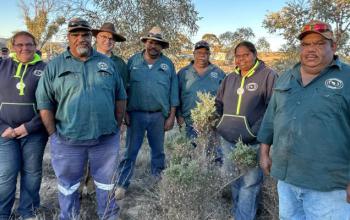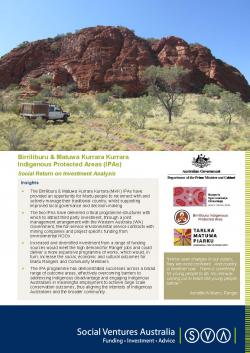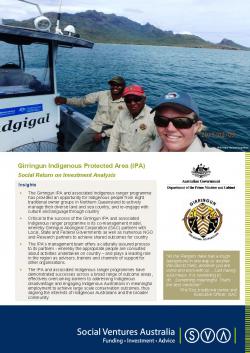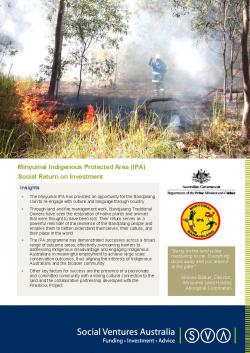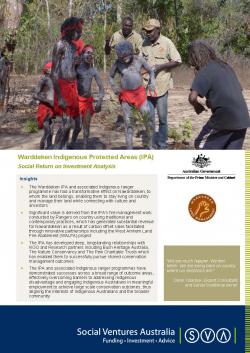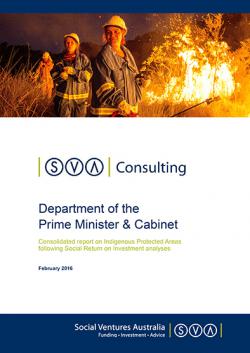Grants for new or expanding Indigenous Protected Areas are available.
The grant opportunity for new and expanding Indigenous Protected Areas opened on 28 July 2023 and closes on 6 October 2023. This is an open and competitive grant round.
Grants are also available for existing consultation and dedicated Indigenous Protected Areas projects (including Sea Country IPAs). This grant round opened on 16 November and will close on 30 November. This is a Closed, Non-Competitive and non-application grant round.
- Visit Grant Connect for further information, and find the Current Grant Opportunity here.
DCCEEW are managing the application process and to find out more about the new grant stakeholders need to visit Indigenous Protected Areas Program grants or email: ipaapplication@dcceew.gov.au or phone: 1800 920 528 if they have any questions.
DCCEEW are managing the application process. To find out more about the new grant stakeholders visit Indigenous Protected Areas Program grants, email ipaapplication@dcceew.gov.au or phone:1800 920 528.
Indigenous Protected Areas (IPAs) are areas of land and sea Country managed by First Nations groups in accordance with Traditional Owners’ objectives. IPAs deliver biodiversity conservation outcomes for the benefit of all Australians, through voluntary agreements with the Australian Government.
The IPA Program has been supporting First Nations communities to voluntarily dedicate and manage their land as protected areas since 1997. In addition to environmental resilience and cultural heritage protection, IPA program participants report benefits of empowerment, cultural connection and wellbeing, as well as broader socio-economic benefits for local communities.
Some areas of IPA land are recognised as part of the National Reserve System, for protection of the nation’s biodiversity and cultural heritage.
Most IPAs are dedicated under International Union for Conservation of Nature (IUCN) Categories 5 and 6, which promote a balance between conservation and other sustainable uses to deliver social, cultural and economic benefits for local Indigenous communities.
IPAs provide a framework for First Nations communities to combine traditional and contemporary knowledge to collaboratively manage their land and sea Country, leverage partnerships with conservation and commercial organisations and provide employment, education and training opportunities for First Nations people.
IPA projects are supported through multi-year funding agreements. Many Indigenous organisations also supplement this funding through fee-for service or other income generating activities, as well as support from private sector and philanthropic organisations. Some examples of IPA projects can be found at Stories from Country 2022.
| Indigenous Protected Areas (IPAs) | 2023 |
|---|---|
| Dedicated IPAs | 84 |
| Total terrestrial area | More than 87 million hectares |
| Percentage of National Reserve System | 50% |
Project locations
- Interactive map of summaries of Indigenous land and sea management projects supported by the Australian Government.
- Indigenous Protected Areas National Map - PDF 2MB
- Indigenous Protected Areas and Commonwealth Funded Ranger Groups Map - PDF 1.6MB
Progress
- The IPA Program was established by the Australian Government in 1997.
- On 3 September 2023 the Nantawarrina IPA celebrated its 25th anniversary, being the first IPA dedicated by Traditional Owners in 1998.
- In 2021, the Australian Government announced a complementary Sea Country IPA Program as part of the Oceans Leadership Package.
- In 2022, the Australian Government announced $231.5 million of additional funding for the next phase of the IPA Program from 1 July 2023 to June 2028.
- There are now 82 dedicated IPAs that make up 50 per cent of Australia’s National Reserve System, managed for the benefit of all Australians.
- More than 750 Aboriginal and Torres Strait Islander people were employed in full-time, part-time and casual jobs under the IPA Program in 2021-22, including approximately 360 women.
- 66 IPAs have management activities delivered by Australian Government-funded Indigenous ranger groups.
Next Phase of the IPA Program
The Australian Government is investing $231.5 million in the IPA Program from 1 July 2023 to June 2028. This delivers on the Government’s commitment to expand investment in IPAs by $10 million per year.
The funding will support First Nations peoples to continue to manage the existing dedicated IPAs and consultation projects (including Sea Country IPAs). The funding will also be used to establish 10 new IPAs and hold a national conference every two years, prioritising areas of importance for biodiversity and creating around 70 new jobs for land and sea managers. In addition, the funding will support and improve the monitoring and evaluation of the IPA program.
The NIAA and the Department of Climate Change, Energy and the Environment (DCCEEW) will continue to jointly administer the next phase of the program and as such are excited to announce that grants for new or expanding Indigenous protected Areas are available. The grant opportunity opens on 28 July 2023 and closes on 6 October 2023.
A Closed Non-Competitive/non-application grant opportunity for existing consultation and dedicated IPA projects is also open - 16 November and closes 30 November 2023. Funding will be available to existing providers from 1 July 2024 to 30 June 2028. Existing IPA providers do not need to submit an application as we will use existing performance information to assess eligibility for a grant. We may request additional information to support the assessment of IPA projects and to inform a funding amount.
DCCEEW are managing the application process and to find out more about the new grant stakeholders need to visit Indigenous Protected Areas Program grants or email: ipaapplication@dcceew.gov.au or phone: 1800 920 528 if they have any questions.
Sea Country IPA Program
On 23 April 2021, the Australian Government announced a $100 million investment to protect Australia’s ocean habitats and coastal environments and contribute to the global task of reducing emissions. As a component of this package, the Government committed $11.6 million over two years to June 2023 to expand the IPA network to include additional sea Country.
The Sea Country IPA Program seeks to expand the IPA network to include coastal and marine areas. The program seeks to strengthen the conservation and protection of Australia’s unique coastal and marine ecosystems, while creating employment and economic opportunities for Indigenous Australians.
On 7 May 2022, the Australian Government announced funding for 10 Sea Country IPA consultation projects. Combined, the 10 Sea Country IPA consultation areas cover over 6.2 million hectares of sea and over 200,000 hectares of land.
The projects support Indigenous-led consultation with Traditional Owners and other stakeholders, management planning, and the delivery of on-ground/water management activities. The projects are expected to generate up to 37 jobs for Indigenous Australians in remote and regional communities.
For more information refer to the Department of Climate Change, Energy, the Environment and Water (DCCEEW) webpage.
Evaluation of the IPA Program
The evaluation of the IPA Program is well underway with site visits completed and a final report expected to be available in late 2023. The NIAA and the DCCEEW are overseeing the evaluation.
The evaluation will assess the extent to which program objectives and associated environmental, cultural, social and economic outcomes are being achieved. It will also guide continuous improvement in future program design.
The NIAA has engaged the services of Ninti One Limited, who are partnering with CSIRO to design and carry out the evaluation.
The evaluation is being conducted in two phases:
- In Phase 1, Ninti One carried out a desktop review of existing information to guide the collection of new data during Phase 2.
- In Phase 2, Ninti One collected and analysed new data, which will be used to produce an evaluation report. This included direct engagement with IPA managers through site visits to 10 IPAs. Analysis of data collected is currently underway and the evaluation report will make recommendations to the NIAA and DCCEEW about how to strengthen future program delivery and outcomes.
The NIAA would like to thank IPA provider organisations for taking time to engage with the evaluation process. Your feedback will help to support future program design.







